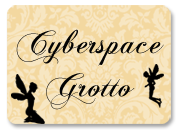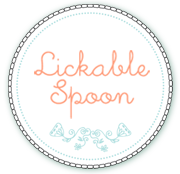So Why Clarify? According to Julia, clarified butter is more tolerant of high heat, and won't cause brown/black "burn" spots on your delicate chicken when cooking. Many of her recipes call for clarified butter. Clarified butter is butter that has been rendered to separate the milk solids and water from the butterfat. Typically, it is produced by melting butter and allowing the different components to separate by density. The water evaporates, some solids float to the surface and are skimmed off, and the remainder of the milk solids sink to the bottom and are left behind when the butter fat (which would then be on top) is poured off.
It all started with this conversation:
Me: "Hey, I am going to make clarified butter and post it on Lickable Spoon. You should photograph it for me!"
My husband: "Well I am going to make some chocolate pudding." whisking "Why don't you photograph me?"
Me: "You just splattered chocolate all over my cookbook."
My husband: "Oh it gives it character....maybe you should photograph it."
Me: "Wait. Are you making fun of me??"
Now on to the task at hand. How hard can it really be to clarify butter? In fact, not hard! I just followed the simple instructions on page 15, and tried it twice, to be sure. Worked like a charm! And my chicken was delicious. Paired with French green beans, we had an authentic French meal. I was admittedly impressed with myself. So I thought I would show you all how to do it. Clarified butter takes only a few minutes, and can be stored in the fridge for a couple of months. Only the recipe says to be careful it is stored with a tight lid in a glass jar, because it will take on the flavor of the rest of the food in the fridge. Here are the instructions. I even photographed it (although I had to resort to using my iPhone):
Clarifying Butter in a few easy steps
You will need:
• As much butter as you dare (I clarified 4 sticks)
• A small pot for melting butter
• A sieve, bowl, and cheesecloth or paper towel for straining
• 2 spoons: a wooden one for stirring melting butter, and a delicate metal spoon/scoop for skimming off the foam, and a bowl in which to put that discarded foam
• A steady hand ;)
The scene of the crime:

START: Melt butter in a pot over medium heat.
Stir gently, trying not to touch the bottom of the pot if you can help it.
 Butter will start to foam after a couple of minutes:
Butter will start to foam after a couple of minutes:
SKIM: Remove all of the milk fat that will rise to the top as foam.
A thin metal spoon worked best for me. Be careful not to disrupt the middle and
bottom layers, otherwise they will recombine, and you might have to start over.

It should look like this after all the fat is skimmed off:

STRAIN: Pour the butter carefully into a lined strainer.
Try not to pour any of the remaining fat at the bottom of the pot into the
sieve/strainer with the clarified butter.

SERVE: The results are clear!










This is the kind of step I tend to - ahem - skip when I see it in a recipe. Maybe next time I'll try it...
ReplyDeleteMy good friend Jessica added this about clarified butter:
ReplyDelete"Some would disagree but there are also health benefits to using it- especially the fact that it can be heated to a higher degree. Other oils are pretty toxic to the body if they are heated beyond a certain point.
In case you don't have enough time next time, you can also buy clarified butter at certain grocery stores (not regular). Clarified butter goes by many different names depending on the place/country you are living in- the most common, or easy to find here is "ghee," the Indian version. They have it at Whole Foods for sure, Indian grocery stores, and places like Sprouts too, if you have something similar...
Maybe you already knew these things but just thought I'd share in case you didn't!"